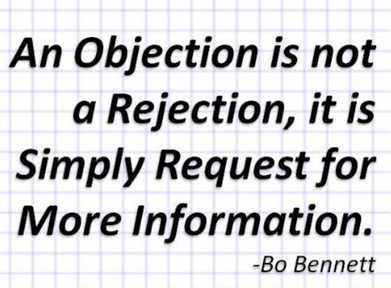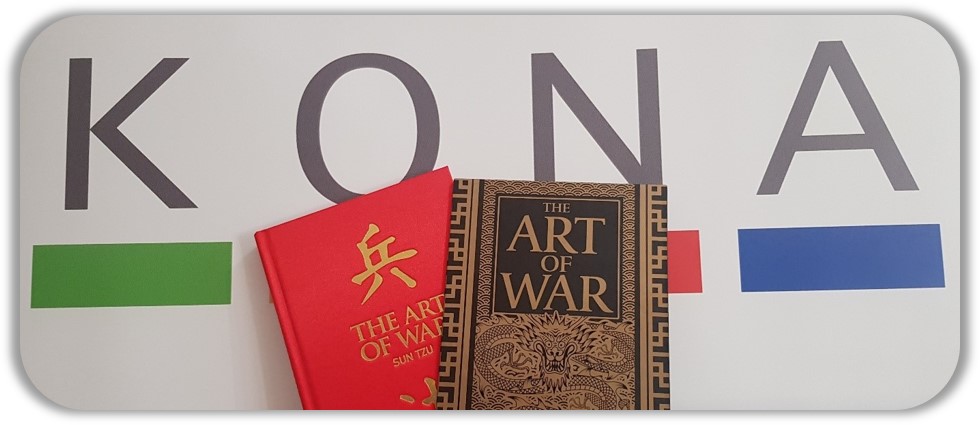If you’ve found this KONA Blog article, chances are you have been in a situation where you are selling to a customer who has raised some objections about your product or service.
Seriously. Stop taking it personally…
An Objection and a Rejection are Two Distinct Concepts
An objection is a concern or disagreement raised about a particular idea, proposal, statement, or situation. It doesn’t necessarily mean outright dismissal, but rather a point of contention that requires further discussion or clarification.
Objections can be valuable in decision-making processes as they provide an opportunity to address concerns and improve the quality of the outcome.
On the other hand, a rejection typically involves declining or refusing something. It indicates a clear refusal of an idea, proposal, request, or offer without further consideration. Rejections are often final and indicate that the matter is not going forward.
Objections, which often arise during negotiations, can be seen as opportunities rather than roadblocks. Effectively handling objections requires finesse, preparation, and a strategic approach.
We will delve into the art of navigating objections, providing you with actionable insights to turn objections into stepping stones toward a successful outcome.

Understanding the Nature of Objections
Objections are natural components of negotiations, stemming from differences in priorities, perspectives, and expectations between parties.
Rather than viewing objections as adversarial, it’s essential to recognise them as expressions of concerns, interests, or questions.
This perspective shift is fundamental to crafting a constructive response.
Active Listening: The Foundation of Objection Handling
When the opposing party presents an objection, resist the urge to immediately counter or defend. Instead, listen intently to grasp the underlying concerns.
A staggering 95% of buyers say that salespeople typically talk too much. 74% of buyers say that they are much more likely to buy if the salesperson would simply listen to them.
By acknowledging their viewpoint and validating their concerns, you lay the groundwork for a more collaborative and solution-oriented conversation.
Preparation: The Key to Confident Responses
Effective objection handling begins long before the negotiation table. Thorough preparation involves:
- Anticipating potential objections
- Understanding their motivations
- Crafting well-reasoned responses
By immersing yourself in the other party’s perspective, you can develop compelling counterarguments that address their concerns and pave the way for productive discussions.

Empathy: Bridging the Gap
Empathy is a powerful tool in objection handling.
Put yourself in the other party’s shoes to understand their:
- Emotions
- Motivations
- Fears
This understanding enables you to tailor your responses in a manner that resonates with their concerns, fostering a more receptive atmosphere for negotiation.
Clarification: Unearthing the Root Cause
In many cases, objections are veiled manifestations of deeper issues. By asking open-ended questions and seeking clarification, you can uncover the underlying reasons behind the objection. This not only demonstrates your genuine interest in their perspective but also helps you address the core concerns more effectively.

Value Proposition: Highlighting Mutual Benefits
When handling objections, pivot the conversation toward the value proposition of your proposal. Emphasize the benefits that align with the other party’s interests and objectives. By showcasing how your proposal addresses their needs, objections can transform into opportunities for mutual gain.
Offering Alternatives: Flexible Problem-Solving
Sometimes, objections arise due to specific elements of your proposal.
Instead of viewing these objections as deadlocks, consider them as invitations to explore alternative solutions.
Present various options that cater to both parties’ needs, demonstrating your commitment to finding a middle ground.
Data and Evidence: Fact-Based Rebuttals
Supporting your responses with relevant data, statistics, or case studies lends credibility to your position.
This approach is particularly effective when dealing with objections based on misconceptions or misinformation.
Concrete evidence can dispel doubts and reinforce the validity of your proposal.
Negotiation Techniques: The Art of Compromise
Objection handling is intricately linked to negotiation techniques. Employ strategies such as “splitting the difference,” where both parties make concessions to meet in the middle. Additionally, consider “conditional agreements,” which involve agreeing to certain terms if specific conditions are met, showcasing your flexibility while safeguarding your interests.

Collaborative Problem-Solving: Seeking Common Ground
Position objection handling as a collaborative problem-solving exercise.
Express your commitment to jointly addressing concerns and finding innovative solutions. This approach promotes an environment of cooperation and shared responsibility, enhancing the likelihood of reaching a favourable agreement.
Maintaining Professionalism: A Lasting Impression
Throughout the objection handling process, maintaining a professional and respectful demeanor is paramount.
Regardless of the intensity of the objection, courteous behavior conveys maturity and integrity, laying the foundation for long-term relationships and potential future collaborations.
Objections are not roadblocks; they are stepping stones toward a successful resolution.
Effective objection handling involves a delicate balance of:
- Active listening
- Empathy
- Strategic preparation
- Skilled negotiation techniques
By understanding the nature of objections and embracing them as opportunities for constructive dialogue, you can transform objections into catalysts for mutually beneficial agreements.
With the right approach, objection handling becomes a nuanced art that empowers you to navigate even the most intricate negotiations with confidence.

Contact KONA for more information and objection handling strategies.
Call 1300 611 288 or Email info@kona.com.au











































































